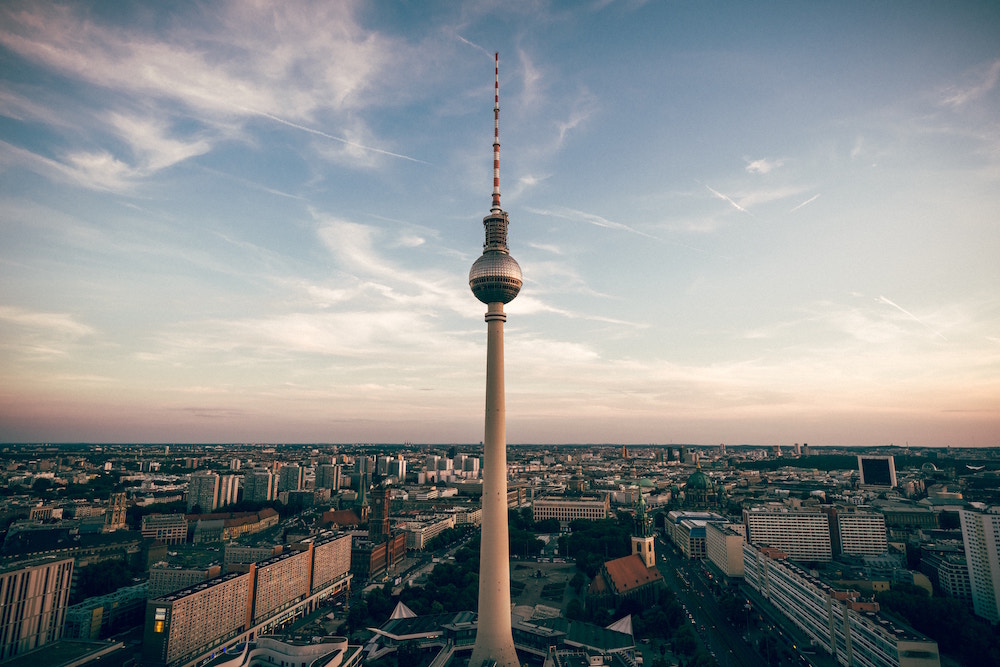 Ja, ja, ja, das ist die Berliner Luft, Luft, Luft
Ja, ja, ja, das ist die Berliner Luft, Luft, Luft
so mit ihrem holden Duft, Duft, Duft
wo nur selten was verpufft, pufft, pufft
in dem Duft, Duft, Duft
dieser Luft, Luft, Luft
Das macht die Berliner Luft!
The songBerlin Air is considered the unofficial anthem of Berlin, 40 years ago it was far more popular in East and West than it is today. But back then, in the days of the GDR, what fizzled out in the Berlin air was anything but a pleasant scent. And there was certainly no question of it being rare.
In theory, environmental protection was a state goal in the GDR. Article 15 paragraph 2 of the GDR constitution of 1974 stipulated: “In the interest of the well-being of the citizens, the state and society shall ensure the protection of nature. The maintenance of the purity of the waters and the air as well as the flora and fauna and the scenic beauty of the homeland are to be ensured by the competent organs and are also the responsibility of every citizen.” But the reality was far from that.
Compared to the 1970s and 1980s, Berlin today is almost an air health resort. Until 1989, pollution levels in the GDR were a secret matter. Smog did not officially exist; it was only in the last months of the GDR that work was done on a smog ordinance. The GDR authorities called the yellowish clouds of dirt billowing through the cities “industrial fog”. In the record winter of 1985, torches were placed along the roadsides in some cities in the GDR so that passers-by could find their way. During the day! The combustion residue from the torches made the situation even worse. In the Ruhr area, industrial plants were temporarily shut down that winter. According to today’s measurements, the concentration of pollutants in the Central German coalfield was about five times as high as in the Ruhr area – but in the East the smog alarm did not go off.
This was also the case in the eastern part of Berlin, where the highest hourly value for sulphur dioxide was 1000 microgrammes on 21 January 1985. Two weeks earlier, on 7 January, it had even reached the 1500 microgram mark for sulphur dioxide per cubic metre of air. The pollution load naturally also blew into the western districts of the Wall City, where smog warnings were repeatedly issued in those years. In Leipzig, the meter’s display was stuck at the upper limit for an hour and a half on 20 January, reaching only 4999 micrograms.
The year before, all GDR media published a report admitting that the forests were endangered by “smoke damage”. But nothing was learned about the extent of the forest dieback. Instead, the state party SED tried to do damage control of a completely different kind: in a “Manual for Agitators on Questions of Environmental Protection” they attributed the increasing environmental discussion to “ideological attacks” by the “class enemy”, who was only interested in distracting attention from their own problems and “discrediting the economic and social policy of the GDR leadership” with the “talk of ‘acid rain'” or the “assertion that lignite has a particularly high sulphur content”.
The GDR’s state-planned economy relied on lignite for its energy supply, because it could be mined in the territory of the GDR and did not have to be imported. This saved scarce foreign currency.
By 1990, lignite production was to be increased to as much as 335 million tonnes. Measured by its sulphur emission density, the GDR, with 46.2 tonnes per square kilometre per year (Federal Republic of Germany fourteen tonnes), had long been far at the top of all European countries. Of the sixty million tonnes of sulphur dioxide blown into the air in Europe every year, 5.1 million came from the GDR and 3.8 million from West German chimneys.
The pollution was also high in summer. Along Mühlenstraße, which runs past The Wall Museum, thousands of two-stroke engines blew their filth unfiltered into the air every day. The Hinterland wall, today’s Eastside Gallery, obstructed the exchange of air. But even so, enough dirt was drawn across the Spree to Kreuzberg. The two-stroke engine of the Trabant 601 emitted about 30 times as many hydrocarbons as a comparable four-stroke engine.
Besides industry and traffic, domestic heating was the main cause of the enormous pollution of the air breathed in the GDR. A large proportion of East Berlin’s flats were heated with brown coal.
Environmental protection played no role for the SED. There was no lack of data; in the 1980s, there was area-wide monitoring of air quality in the GDR and the data was analysed in real time.
Since the pollution stank to high heaven, in the truest sense of the word, the cover-ups were pointless. Under the protection of the Protestant church, an environmental movement developed that would later help to overthrow the system. One example was the Environmental Library, which was founded in 1986 in rooms of the Zion Church in East Berlin. In November 1987, the MfS raided the Environmental Library and arrested several people. They were quickly released again because they feared negative reports on West television.
Occasionally data leaked out, but in 1982 an investigation in the GDR Central Journal for Pharmacology entitled “The Cadmium Content of Food in the GDR” caused alarm. In it, it was recommended “for safety reasons” to blend grain produced in the Freiberg district with grain from other growing areas “in order to keep the Cd contamination for humans as low as possible”.
Shortly afterwards, the booklet was confiscated by the GDR authorities and reissued – this time without the cadmium article. The Ministry for State Security had thus solved the problem for the GDR leadership.
While in West Berlin, as in the Federal Republic, the catalytic converter was introduced for new cars with petrol engines in 1984, there were no such plans in East Berlin. There was no lack of voices calling the introduction in West Berlin therefore pointless. However, the five-year transition period happened to coincide with the fall of the Wall. And so almost all new cars with petrol engines in reunified Germany had catalytic converters.
Die Berliner Luft nach dem Mauerfall
80 per cent of the GDR power plants were shut down after the fall of the Wall and the rest were modernised so that air pollution fell to a similarly low level as in the West. Modern flue gas desulphurisation plants have pushed the pollution with sulphur dioxide and dust sharply downwards. On an annual average, sulphur dioxide concentrations are now below five micrograms per cubic metre of air throughout Germany; the permissible hourly average of 350 micrograms has never been exceeded since it was established.
From the world’s highest measured pollution with sulphur dioxide in the 1980s, eastern Germany has come down to good values at record speed. Today, the sulphur dioxide level is not even 1 % of the average GDR value. In the meantime, Germany no longer exceeds the European-wide limit values for sulphur dioxide, carbon monoxide, benzene and lead. Since 1990, for example, lead emissions in Germany have fallen by over 90 per cent. Due to leaded petrol, the level was also high in the old Federal Republic until then.
The nitrogen dioxide values in Berlin are still above the current European limit values, but these are far below those of the time before 1989. For fine dust (PM2.5), the guideline limit value of 20 µg/m³ as an annual average, valid since 2020, is currently being complied with. For (PM10), the value is occasionally exceeded. Since the air emitted by modern diesel engines is cleaner than the air sucked in, traffic will play an increasingly minor role in particulate matter. In 2019, according to the Berlin Senate, only 1/3 of the particulate matter measured in Berlin came from the city. And only 26% comes from traffic.
Nationwide, there are still 36,000 Trabbis on the road, and the number is even increasing as interest in Ostalgie grows, even though production ceased in 1990. Restored cars are in high demand. In 2018/19, the number of “racing caps” registered for road use increased by hundreds of vehicles. But today there are catalytic converters for the Trabbi that reduce environmental pollution.
1.21 million passenger cars were registered in Berlin in 2019. The number rose because the population also increased. Compared to other major cities, however, Berlin still has a remarkably low level of motorisation, with around 340 cars per 1000 inhabitants.
But there is still work to be done. Leisure captains, passenger ships and cargo ships are still allowed to chug across the Spree, no matter how much the exhaust smokes. Nevertheless, the Mercedes Benz harbour at the Eastside Gallery is a good place for tourists to go in summer, and the riverside path is a nice alternative on the way to The Wall Museum. The wind over the Spree makes for pleasantly fresh and clean air.
And what about the current topic of CO2? In 2020, Berliners produce significantly fewer emissions per capita than the average person in Germany. Changes in domestic heating in particular have reduced the emission of CO2 from fossil fuels. After the fall of the Berlin Wall in 1989, Berlin’s CO2 emissions fell sharply until 2010. Due to the increasing population and economic development, Berlin’s CO2 emissions have stagnated since 2011.


